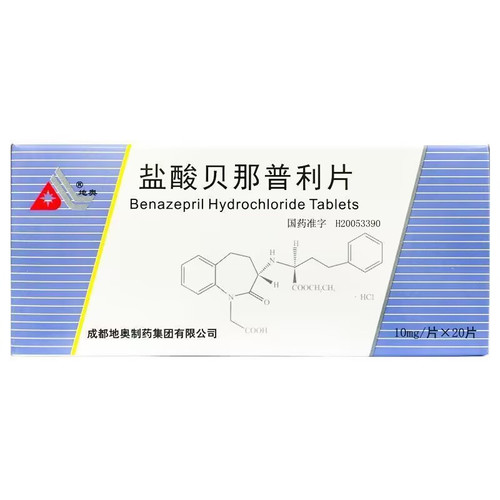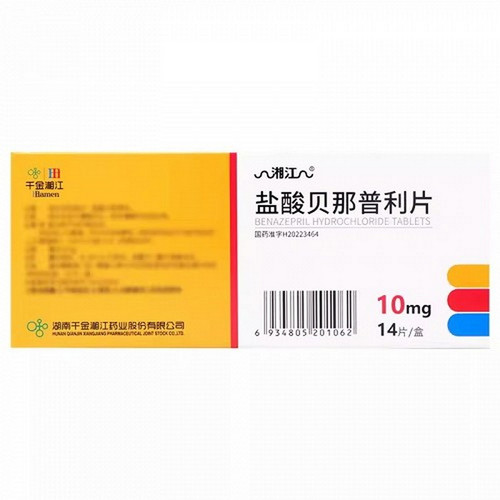Product Overview
[Drug Name]
Generic Name: Propranolol Hydrochloride Tablets
Trade Name: YaBang Propranolol Hydrochloride Tablets 10mg*100 Tablets
Pinyin Full Code: YaBang YanSuanPuZuoLuoErPian 10mg*10OPian
[Main Ingredient]
The main ingredient of this product is propranolol hydrochloride.
[Properties]
The main ingredient of this product is propranolol hydrochloride.
[Indications/Main Functions]
1. As a secondary preventive measure to reduce mortality from myocardial infarction. 2. Hypertension (alone or in combination with other antihypertensive drugs). 3. Exertional angina. 4. Control of supraventricular tachyarrhythmias and ventricular arrhythmias, particularly those associated with catecholamines or those induced by digitalis. It can be used to control the ventricular rate in atrial flutter and atrial fibrillation where digitalis is ineffective. It can also be used to treat refractory premature beats and improve patient symptoms. 5. Reduces outflow tract pressure gradients in hypertrophic cardiomyopathy, alleviating symptoms such as angina, palpitations, and syncope. 6. Used in combination with alpha-blockers to control tachycardia in patients with pheochromocytoma. 7. Used to control rapid heart rate in hyperthyroidism and treat thyroid storm.
[Specifications]
10mg x 100 tablets
[Dosage and Administration]
① Hypertension: Oral, initial dose 10mg (1 tablet), 3-4 times daily. Can be used alone or in combination with a diuretic. The dose should be increased gradually, with a maximum daily dose of 200 mg (20 tablets). ② Angina pectoris: Start with 5 mg to 10 mg (half a tablet to 1 tablet), 3 to 4 times a day, and increase by 10 mg to 20 mg (1 tablet to 2 tablets) every 3 days, gradually increasing to 200 mg (20 tablets) per day, taken in divided doses. ③ Arrhythmia: 10 mg to 30 mg (1 tablet to 3 tablets) per day, 3 to 4 times a day. Take before meals and before bedtime. ④ Myocardial infarction: 30 mg to 240 mg (3 tablets to 24 tablets) per day, 2 to 3 times a day. ③ Hypertrophic cardiomyopathy: 10 mg to 20 mg (1 tablet to 2 tablets), 3 to 4 times a day. Adjust the dose according to needs and tolerance. Pheochromocytoma: 10 mg to 20 mg (1 tablet) ~2 tablets), 3-4 times daily. For three days before surgery, a β-blocker should generally be used first, followed by propranolol after the drug's effects stabilize.
[Adverse Reactions]
This product may cause central nervous system adverse reactions such as dizziness, confusion (especially in the elderly), depression, and slowed reaction times; dizziness (caused by hypotension); bradycardia (<50 beats/minute); less common symptoms include bronchospasm, dyspnea, and congestive heart failure; even more rare symptoms include fever and sore throat (due to granulocytopenia), rash (allergic reaction), and bleeding tendency (thrombocytopenia). If adverse reactions persist, be especially vigilant for Raynaud's sign, cold extremities, diarrhea, fatigue, dry eyes, mouth, or skin, nausea, numbness in the fingers and toes, and unusual fatigue.
[Contraindications]
1. Bronchial asthma. 2. Cardiogenic shock. 3. Heart block (first- to fifth-degree atrioventricular block). 4. Severe or acute heart failure. 5. Sinus bradycardia.
[Drug Interactions]
Drug interactions may occur if used concurrently with other medications. Please consult your physician or pharmacist for details.
[Precautions]
1. This product can be taken orally on an empty stomach or with food; the latter may slow liver metabolism and increase bioavailability. 2. Tolerance of beta-blockers varies greatly from person to person; the dosage must be adjusted accordingly. Individualization. When using this product for the first time, you need to start with a small dose, gradually increase the dose and closely observe the reaction to avoid accidents. 3 Note that the blood depth of this product cannot fully predict the pharmacological effect, so clinical medication should also be guided by clinical signs such as heart rate and blood pressure. 4 Patients with coronary heart disease should not stop using this product suddenly, otherwise angina pectoris, myocardial infarction or ventricular tachycardia may occur. 5 Patients with hyperthyroidism should not stop using this product suddenly, otherwise the symptoms of hyperthyroidism will be aggravated. 6 Long-term users of this product should gradually reduce the dose before withdrawal, at least after 3 days , generally for 2 weeks. 7. Long-term use of this drug may cause heart failure in a small number of patients. If this occurs, digitalis glycosides and/or diuretics can be used to correct the condition, with the dosage gradually reduced and eventually discontinued. 8. This drug may cause hypoglycemia in diabetic patients, but has no hypoglycemic effect in non-diabetic patients. Therefore, diabetic patients should have their blood sugar checked regularly. 9. Blood tests, blood pressure, heart function, liver and kidney function, etc. should be checked regularly while taking this drug. 10. Interference with diagnosis: When taking this drug, blood urea nitrogen, lipoproteins, creatinine, potassium, triglycerides, and uric acid may increase, while blood sugar decreases. However, this may sometimes increase in diabetic patients. In patients with renal insufficiency, the metabolites of this drug may accumulate in the blood, interfering with the diazotization reaction in serum bilirubin determinations, resulting in false positives. 11. Use this drug with caution in the following conditions: a history of allergies, congestive heart failure, diabetes, emphysema or non-allergic bronchial asthma, hepatic insufficiency, hypothyroidism, Raynaud's syndrome or other peripheral vascular disease, or renal impairment. 12. Use with caution in athletes.
[Pediatric Use]
Undetermined, but generally 0.5 mg/kg to 1.0 mg/kg per day, orally in divided doses, is recommended. The therapeutic range for pediatric dosing based on body weight is similar to that for adults. However, the therapeutic range for pediatric dosing based on body surface area is higher than that for adults. There are reports that patients with congenital idiocy experience elevated blood concentrations, thereby improving bioavailability.
[Elderly Use]
Due to the reduced ability of elderly patients to metabolize and excrete drugs, the dose should be adjusted appropriately.
[Overdose]
In general, in the event of an overdose, the gastric contents should be emptied as soon as possible to prevent aspiration pneumonia. For bradycardia, administer atropine and use isoproterenol with caution; if necessary, implant a pacemaker. For premature ventricular contractions, administer lidocaine or phenytoin. For heart failure, administer digitalis or diuretics. For hypotension, administer pressors such as norepinephrine or epinephrine. Epinephrine or aminophylline is administered for bronchial asthma. This drug cannot be excreted through dialysis.
[Pharmacology and Toxicology]
1. Pharmacological Actions: ① Propranolol is a nonselective competitive inhibitory adrenergic receptor blocker. It blocks β- and β-2 receptors on the heart, antagonizing sympathetic nerve excitation and the effects of catecholamines, reducing cardiac contractility and contraction velocity. It also inhibits vascular smooth muscle contraction, reduces myocardial oxygen consumption, and restores the oxygen supply and demand balance of ischemic myocardium to a low level. It is used to treat angina pectoris. ② It inhibits adrenergic stimulation of cardiac pacemaker potentials and is used to treat arrhythmias. This drug can also inhibit renin release and reduce cardiac output through central nervous system and adrenergic neuronal blockade, making it useful for the treatment of hypertension. ③ It competitively antagonizes the effects of isoproterenol and norepinephrine, blocking β-2 receptors and reducing plasma renin activity. It can cause bronchospasm. It inhibits insulin secretion, elevating blood sugar, masking hypoglycemia symptoms, and delaying recovery from hypoglycemia. ④ It has a significant antiplatelet aggregation effect, primarily related to its membrane-stabilizing effect and inhibition of platelet membrane Ca+ transport.
2. Carcinogenicity, Mutagenicity, and Reproductive Toxicity: Daily administration of 150 mg/kg to rats or mice for 18 months revealed no significant toxic reactions and no drug-related carcinogenic effects. Reproductive studies revealed no impairment of reproductive capacity related to propranolol. This product exhibited embryotoxicity when administered to animals at 10 times the human dose.







